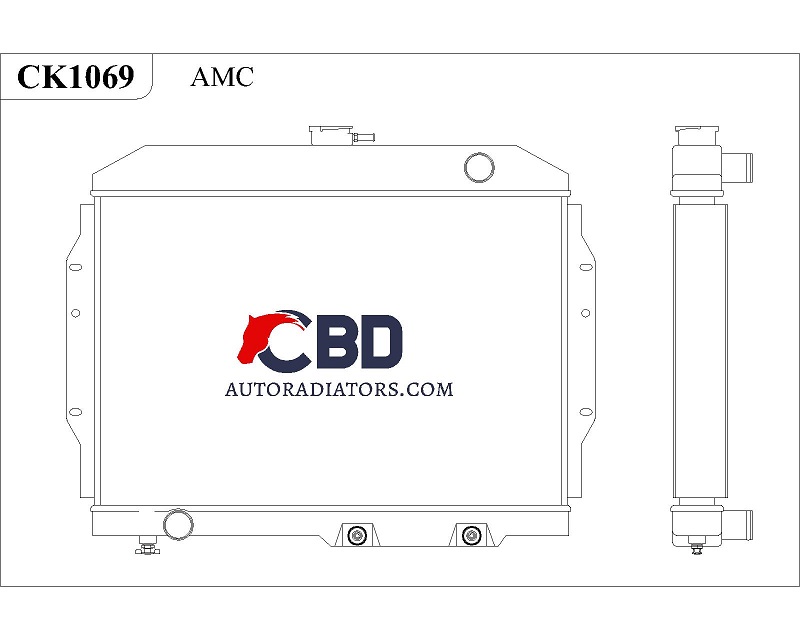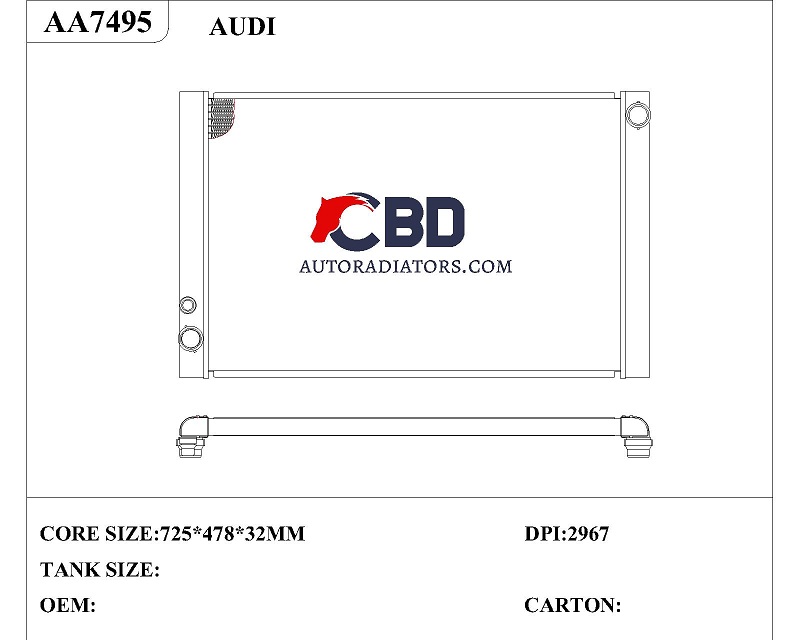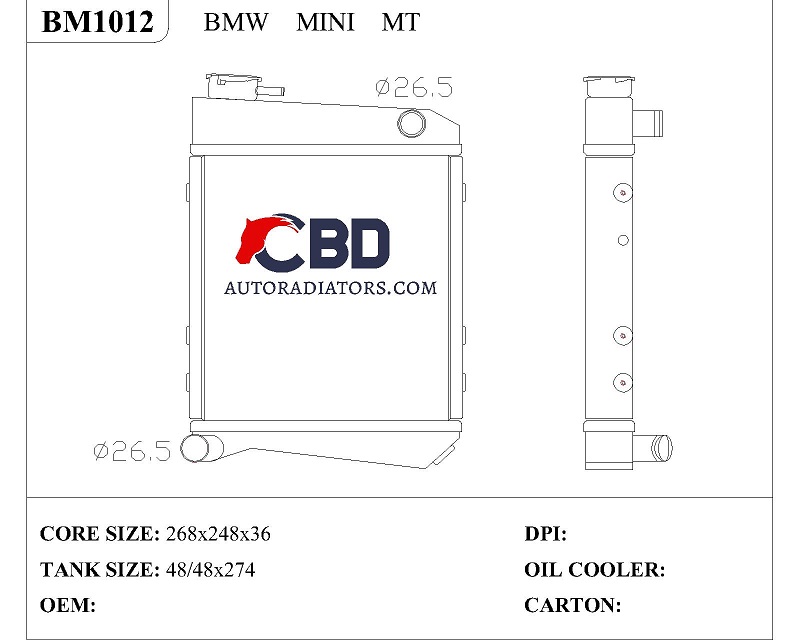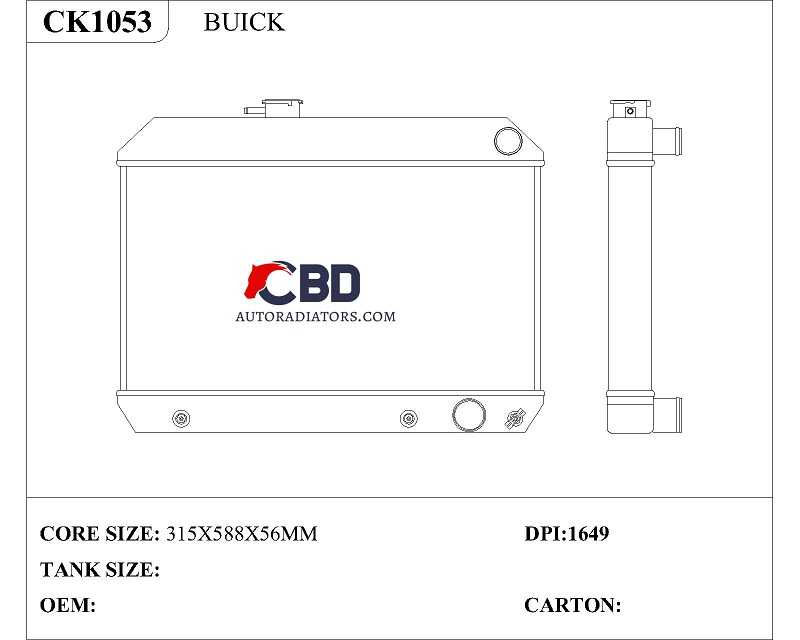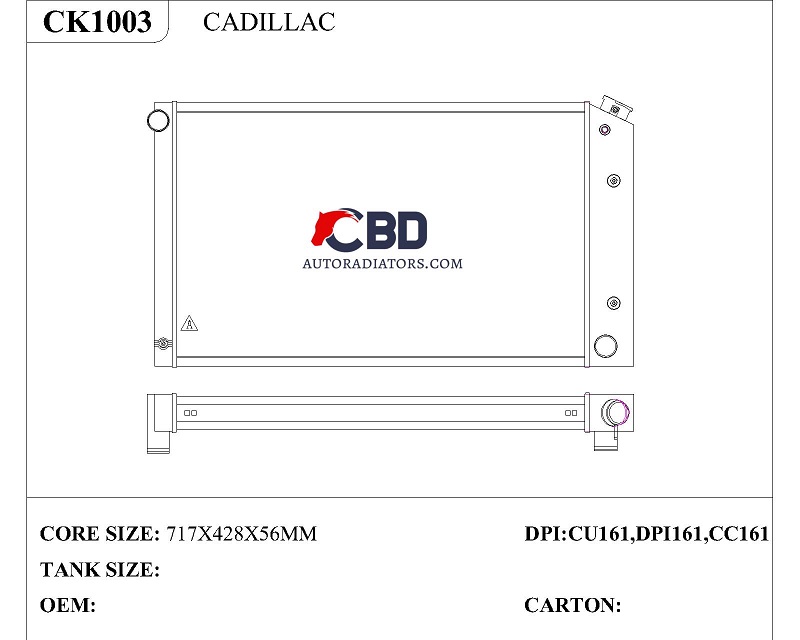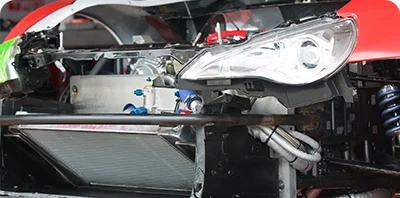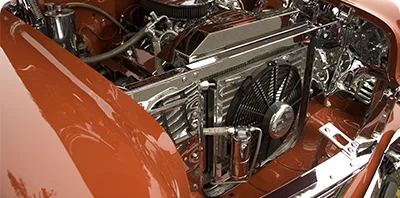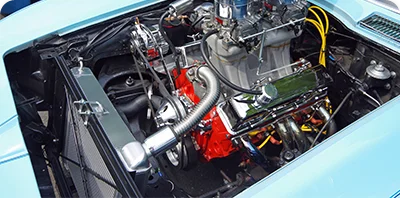Aluminium Car Radiators
Car radiator for sale can be classified into two categories based on the water tank material: Plastic vehicle radiators and All aluminum ca radiators, while plastic radiator chose plastic for water tank, all-aluminum radiator only uses aluminum to make both radiator core and water tank, which give automatic radiator some advanced features in heat dissipation, durability and eco-friendly. Compare to the cooper car radiator price, all-aluminum radiators can be much cheaper and lighter.
So we devoted ourselves to all-aluminum best car radiator manufacturing to cater to the industrial trend. At the yearly capacity of 100,000 units, our products, made by our car radiator factory, have covered more than 1000 varieties of aluminium car radiators, Truck & Jeep radiator, Classic car Radiator, Racing Radiator, heavy-duty radiator, motorcycle radiator, agricultural radiator, forklift radiator.
Car Radiator Replacement
Because most automotive engines run on internal combustion, engine heat is a major problem. The many explosions that take place in the engine cylinders while the engine is running put off a fair amount of heat – and if this heat is uncontrolled, it can damage the engine itself. Savvy drivers, then, understand that it is important to monitor engine temperatures at all times. The best way to keep your engine running smoothly is with a good engine cooling system. The cooling system is anchored by the radiator, which is responsible for carrying warmed coolant fluid so that the heat can dissipate back into the external environment. Liquid coolant is pumped through a series of channels that pass through the engine compartment. Generally, the coolant is a mixture of water and chemicals known as antifreeze. Engine cooling mechanisms are most often placed near the front of the vehicle, just behind the grille. This allows for plenty of air flow in and around the cooling system, allowing for more efficient heat transfer. If your engine cooling system needs a few tweaks, shop online at PartsGeek.com for the right parts at the best prices – guaranteed.
Radiator Failure
An engine can overheat whenever it operates in sweltering weather. But the risk of overheating goes up considerably if the radiator is low on coolant or there is a leak in one of its hoses. Other possible radiator failures include a malfunctioning thermostat, a mechanical issue with the fan, or a faulty pressure cap that cannot pressurize the system, resulting in an overflow of coolant. In any of these cases, the engine can overheat, resulting in severe damage.
To avoid costly repairs, car owners should be aware of the signs of radiator failure. Symptoms include:
1.An unusual rise and fall in the instrument cluster temperature gauge
2.The sight or smell of smoke coming from under the hood of the car
3.Any amount of green liquid (coolant or antifreeze) collecting under the vehicle
4.Visual evidence of rust on the components of the cooling system
5.A professional mechanic should examine the cooling system and radiator if any of these symptoms become apparent.
Preventative Maintenance
Like any other vehicle component, the radiator requires specific maintenance to assure its longevity and proper operation:
1. Replace radiator hoses every three years or 36,000 miles. Since hoses are rubberized and can dry out and break over time, they should never exceed 50,000 miles of driving.
2. Check coolant levels regularly. If the fluid level is noticeably dropping between checks, there may be a leak in the cooling system. It is important to pay close attention as slow leaks may be difficult to detect.
3. Have the coolant flushed every 25,000 miles to remove any contaminants in the radiator and its hoses. This service also conditions the cooling system to help prevent the components from rusting and allows the radiator to operate at peak performance throughout its life.
Automatic Aluminum Car Radiators FAQs
- How Much is a Replacement Radiator?
-
Auto radiators don't work alone. Check your entire cooling system if you're replacing this part, and replace your cap too unless you've done it in the past few months. Replacement radiators might cost somewhere between $125-550 at full price.
- What are Some Common Radiator Problems?
-
Radiators are a primary component in your engine cooling system. If they fail or they're damaged, it leads to lower performance and loss of efficiency and best.
- How Does a Radiator Work?
-
A vehicle's engine gives it the power it needs through the burning of fuel and the creation of energy from its many moving parts. This power and movement can generate a tremendous amount of heat throughout the engine. It is essential to vent this heat from the engine during operation to avoid overheating, which can result in severe damage.
A radiator helps to eliminate excess heat from the engine. It is part of the engine's cooling system, which also includes a liquid coolant, hoses to circulate the coolant, a fan, and a thermostat that monitors the coolant temperature. The coolant travels through the hoses from the radiator, through the engine to absorb the excess engine heat, and back to the radiator.
Once it returns to the radiator, thin metal fins release the heat from the coolant to the outside air as the hot liquid passes through it. Cool air flows into the radiator through the car's grille to aid in this process, and when the vehicle isn't moving, such as when you're idling in traffic, the system's fan will blow air to help reduce the heated coolant's temperature and blow the hot air out of the car.
After the coolant passes through the radiator, it recirculates through the engine. This heat exchange cycle is continuous to maintain an optimal operating temperature and prevent the engine from overheating.


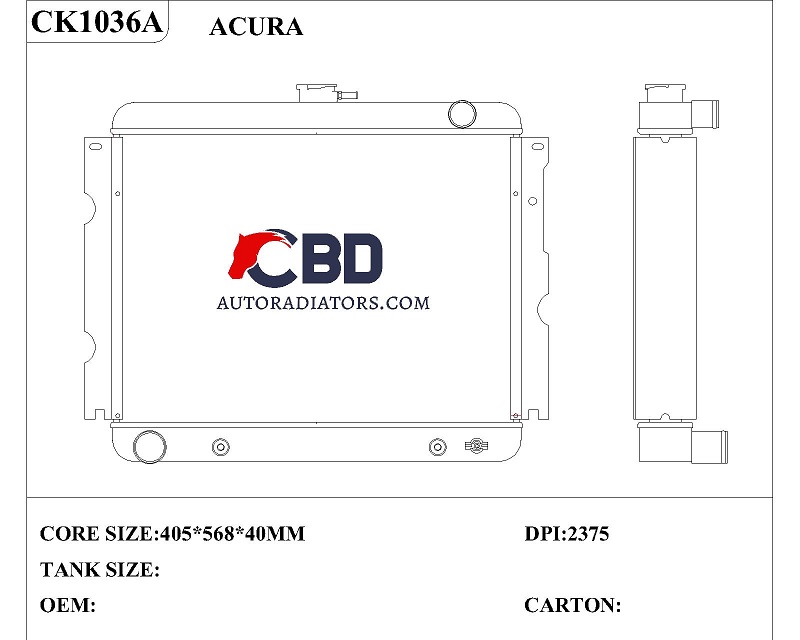
 Car Radiator Price
Car Radiator Price
